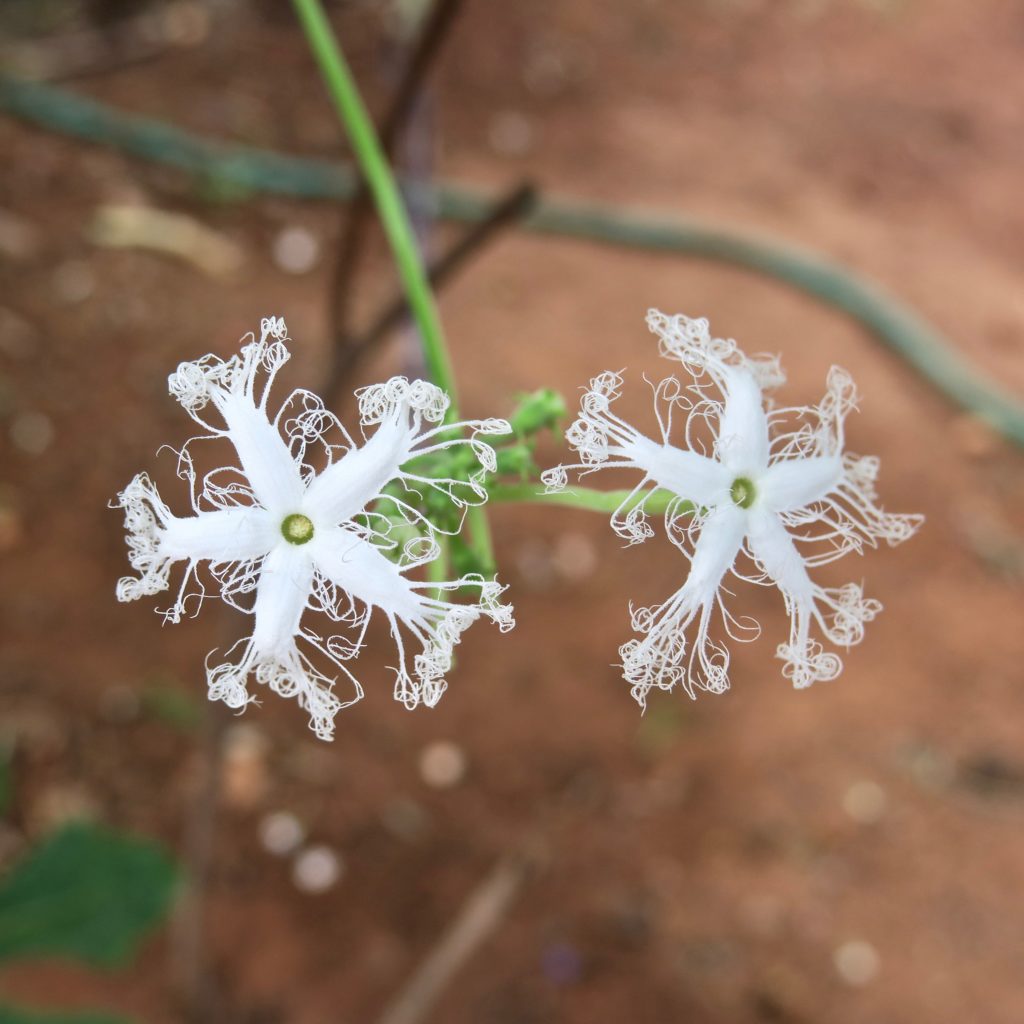
2020 was a strange year, strange and terrible. I’m hoping this year turns out better and to that end, I thought I’d start this year out with the good kind of strange- Strange and beautiful! Today we’re looking at snake gourds, although why we would go with snake when serpent gourd was an option is beyond me.
This plant is cultivated primarily for its ‘fruit’, which often grow up to 5ft in length, a fact I am well aware of since I’m the 5ft ruler used to measure our harvest. (Ha. Ha.) Last year we grew one that was a few inches taller than I am! This year we haven’t been as lucky. Here’s my grandma holding our prized fruit of the season. We used this entire gourd to make a sabzi for four people because snake gourd shrinks almost as much as spinach when cooked.
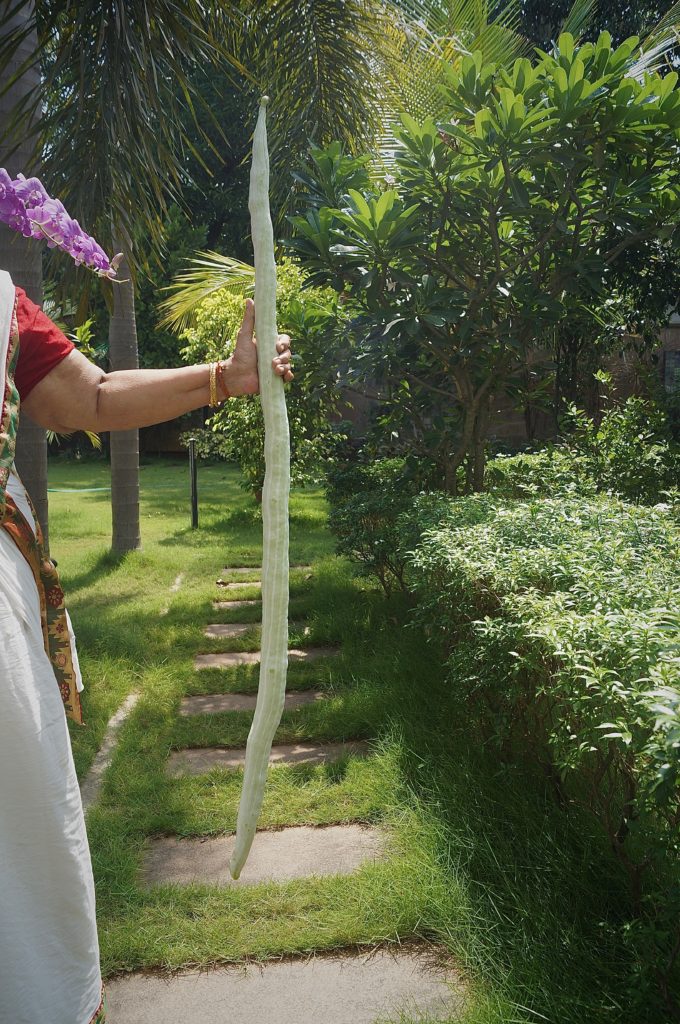
The fruit is harvested when it’s young, before it becomes tough and brittle. Once mature though, the red pulp at the centre of the fruit develops a sour taste and in parts of Africa, is used as a substitute for tomatoes.
The gourd is also native to Australia, where they’ve been used to make Didgeridoos. This isn’t as uncommon as you would think, since dried pumpkins have been used to make Sitars in India. The Kosha Journal has a great article on the entire process.
While there are small varieties, I think we can agree the longer ones are far more fun to look at! This climber plant is fed onto trellis and you’ll find multiple snake gourds hanging down from it. Snake gourds can also grow in twisted curls or spirals, and to prevent that we tie little stones to the ends of the gourds when they’re growing. In other non kitchen uses, apparently dried snake gourds can also be used as a loofah? Has anyone tried this out?
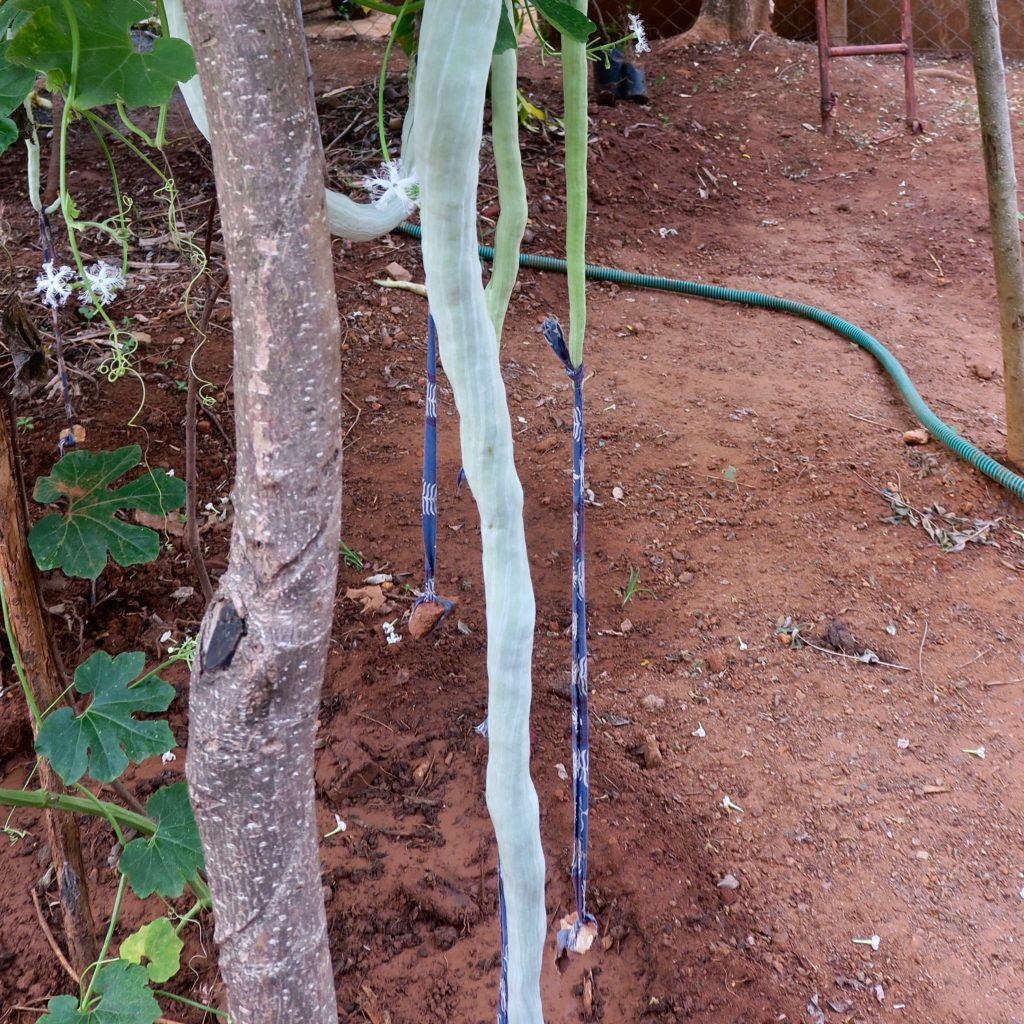
One (and the only) way I eat snake gourd is lightly pan fried in coconut oil with mustard seeds and curry leaves. There are tons of recipes out there for a stuffed version which sound delicious but I’ve never tried that. Another thing I haven’t tried? Eating it raw, which surprisingly, is a thing. It’s supposed to taste like cucumber but I’m quite skeptical. If anyone’s tried it raw please let me know? The flavour of cooked snake gourd on it’s own, not gonna lie, is pretty underwhelming. That’s why I enjoy the coconut oil stir fry version because the mallu in me will eat anything that tastes of coconut oil, mustard seeds and curry leaves.
This blogpost however, was not written for the fruit.
It was to show you this beauty.
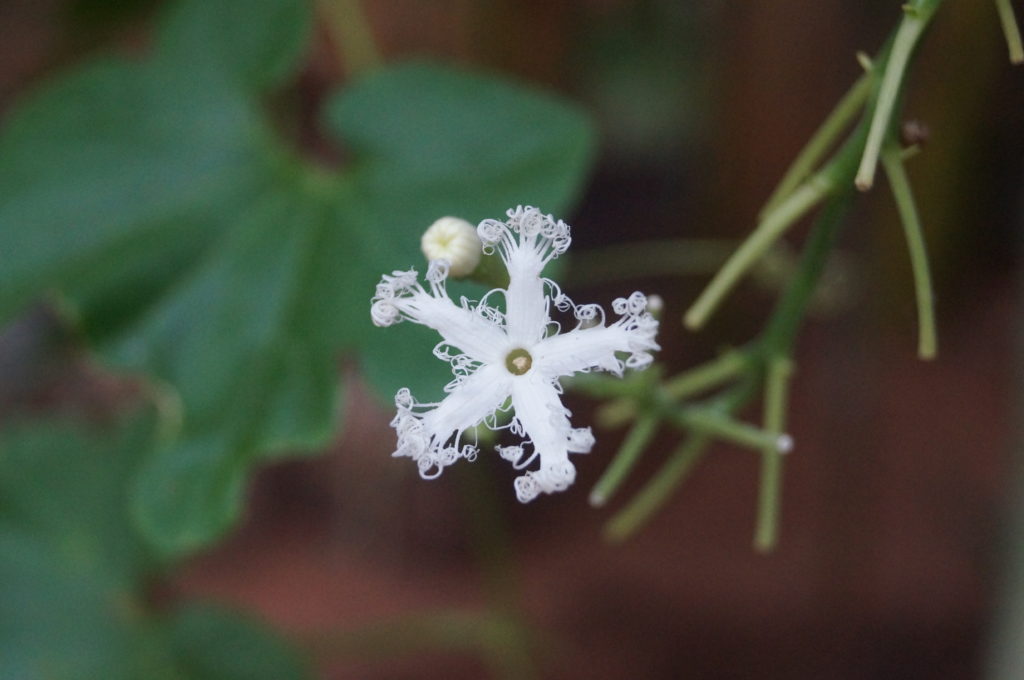
This is the flower of the snake gourd plant. They’re these unique little buds with curly tendrils at the ends of each petal. The tendrils open up at night to form an intricate lace around the flower. I was unable to get clear shots at night but hopefully I’ll get another shot at it soon!
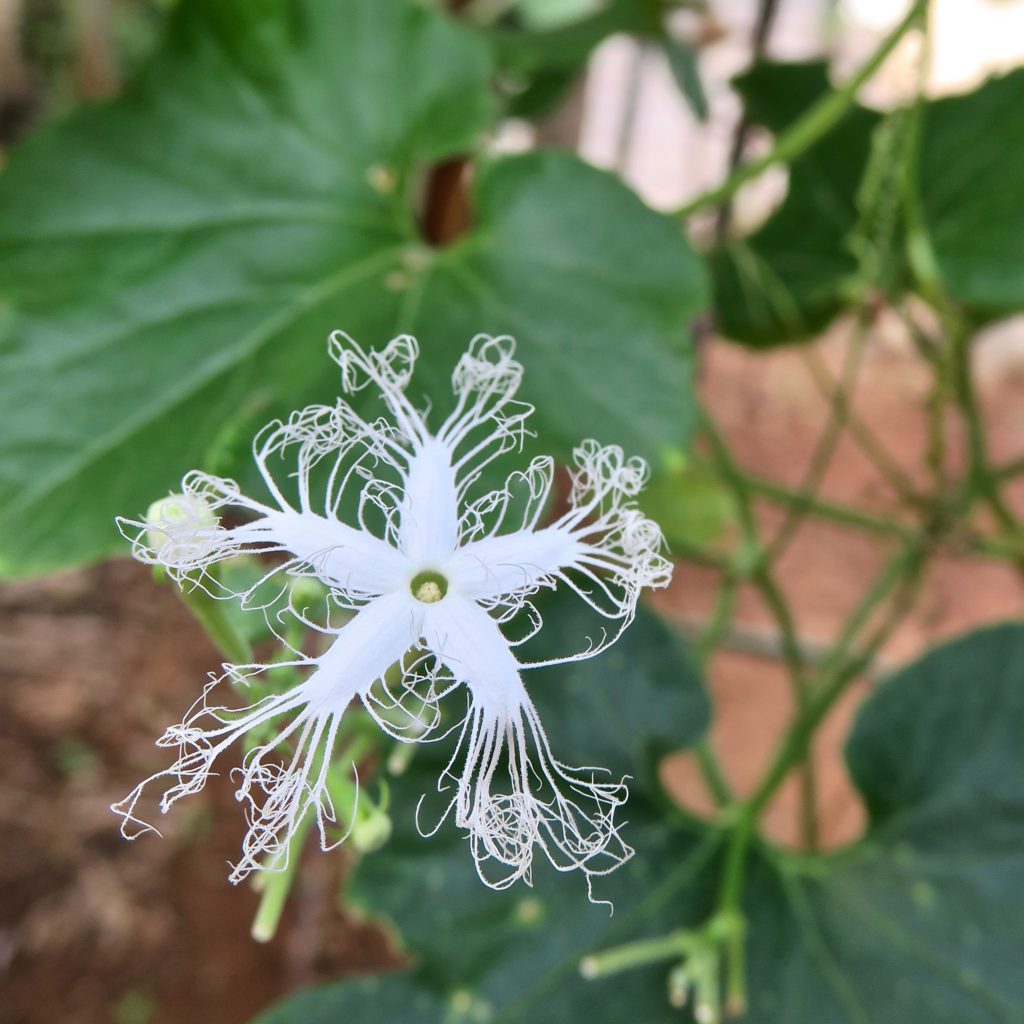
We’ve been planting snake gourd for years and I’ll eat it when it’s made at home but it’s not something I crave. I can’t believe I’ve walked past the snake gourd section so many times and never noticed this. I suppose the giant gourds do catch your eye first but these are far more interesting!
While the jury’s still out on whether this tastes like cucumber, the plant does have both male and female flowers much like those in the cucumber family. These highly scented flowers are open for business at night. The petals unfurl, revealing an intricate pattern. Unlike flowers of the squash family which bloom during the day and are pollinated by bees, snake gourd flowers are primarily pollinated by moths at night.
My grandma’s obsessed with flowers. The front garden is her baby, with endless varieties of flowers so imagine my surprise when I found the most interesting flower in our vegetable patch! I bet there’s a lesson in there somewhere. 😛
